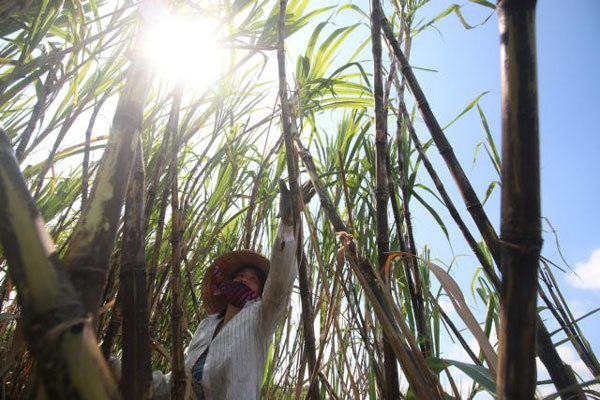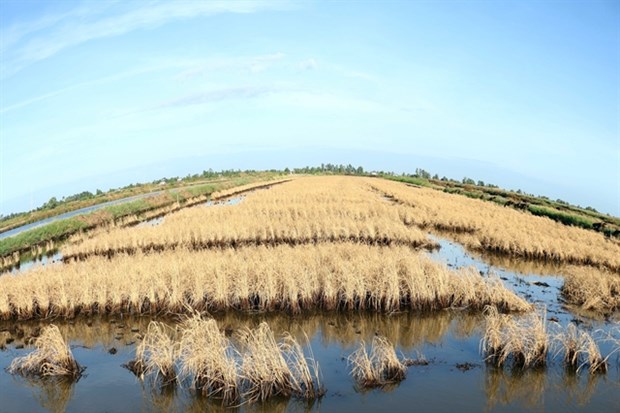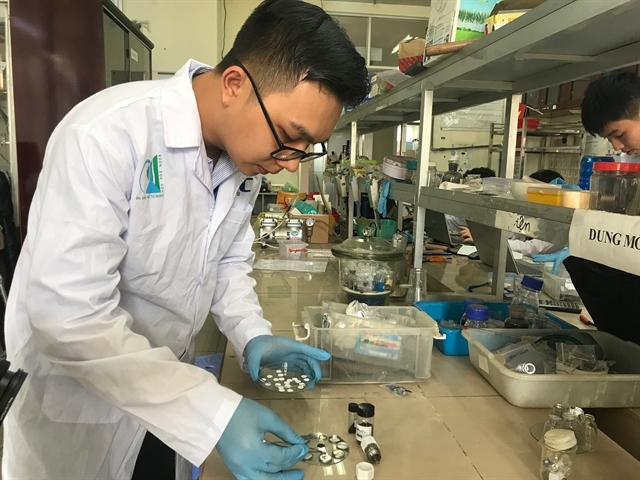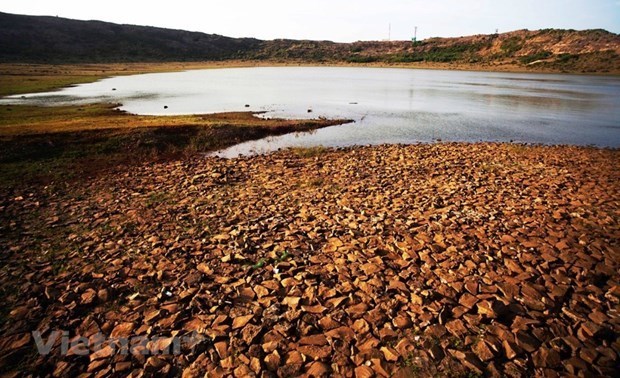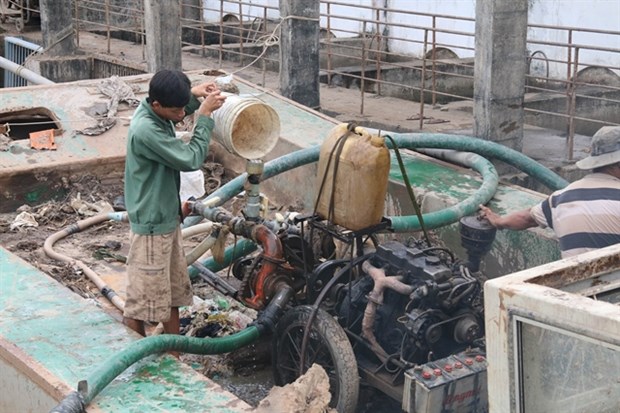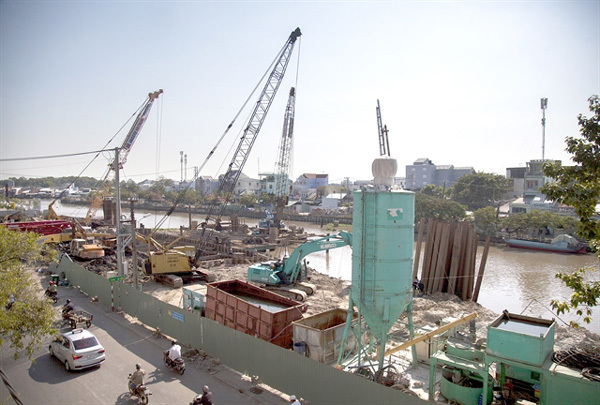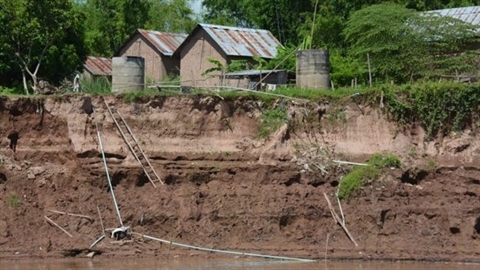- © Copyright of Vietnamnet Global.
- Tel: 024 3772 7988 Fax: (024) 37722734
- Email: [email protected]
mekong delta
Update news mekong delta
VN catfish sellers try to conquer home market
 Seafood companies have vowed to bring catfish to Vietnamese dining tables after their success in the world market.
Seafood companies have vowed to bring catfish to Vietnamese dining tables after their success in the world market.
Mekong Delta considers VND67-trillion expy projects
 The Mekong Delta is expected to introduce two more major expressways, whose total investment exceeds VND67.4 trillion, in the years to come to bolster the region’s socioeconomic growth, according to the Ministry of Transport.
The Mekong Delta is expected to introduce two more major expressways, whose total investment exceeds VND67.4 trillion, in the years to come to bolster the region’s socioeconomic growth, according to the Ministry of Transport.
Sugarcane no longer sweet for Mekong Delta’s largest producer
 Hau Giang Province, the largest sugarcane producer in the Cuu Long (Mekong) Delta, is growing less and less of the crop as prices fall sharply.
Hau Giang Province, the largest sugarcane producer in the Cuu Long (Mekong) Delta, is growing less and less of the crop as prices fall sharply.
Deeper look into ecological costs of coal-fired power in Mekong Delta needed: expert
 Ecological expert Nguyen Huu Thien speaks on the need for clearer environmental regulations for thermopower plants in the Mekong Delta to reduce risks to the region’s aquatic resources.
Ecological expert Nguyen Huu Thien speaks on the need for clearer environmental regulations for thermopower plants in the Mekong Delta to reduce risks to the region’s aquatic resources.
Mekong Delta sets up public tap water faucets as saline intrusion peaks
 The Mekong Delta is taking steps to ensure sufficient freshwater supply for household use and agricultural production in areas affected by saltwater intrusion and drought.
The Mekong Delta is taking steps to ensure sufficient freshwater supply for household use and agricultural production in areas affected by saltwater intrusion and drought.
Mekong Delta, Central Highlands brace for forest fires
 Authorities in the Cuu Long (Mekong) Delta and Tay Nguyen (Central Highlands) regions are taking precautionary measures to protect forests facing high risk of fires due to the prolonged hot and dry weather.
Authorities in the Cuu Long (Mekong) Delta and Tay Nguyen (Central Highlands) regions are taking precautionary measures to protect forests facing high risk of fires due to the prolonged hot and dry weather.
Mekong Delta takes measures to reduce saltwater intrusion
 Though saltwater intrusion in the Mekong Delta was predicted to come earlier and with higher level of salinity than that recorded in the 2015-2016 dry season, the damages to farming areas are expected to be less serious.
Though saltwater intrusion in the Mekong Delta was predicted to come earlier and with higher level of salinity than that recorded in the 2015-2016 dry season, the damages to farming areas are expected to be less serious.
Severe drought expected in 2020: forecast agency
 The drought in the dry season this year will be quite harsh and water shortage may occur in many places. The central region may face serious water shortage from June.
The drought in the dry season this year will be quite harsh and water shortage may occur in many places. The central region may face serious water shortage from June.
Landslides in Mekong Delta attributed to sand exploitation
 The World Wildlife Fund (WWF) and Mekong River Commission (MRC) say the river bed of Mekong’s two main tributaries in Mekong Delta fell by 1.4 meters in 1998-2008 due to sand overexploitation.
The World Wildlife Fund (WWF) and Mekong River Commission (MRC) say the river bed of Mekong’s two main tributaries in Mekong Delta fell by 1.4 meters in 1998-2008 due to sand overexploitation.
Exotic fruits much sought after for Tet holiday
 With favourable natural conditions, the Mekong delta region is home to diverse fruit species. When Tet (Lunar New Year) comes, exotic fruits are offered for sales to serve people’s demand.
With favourable natural conditions, the Mekong delta region is home to diverse fruit species. When Tet (Lunar New Year) comes, exotic fruits are offered for sales to serve people’s demand.
University research team makes rechargeable batteries out of rice husks
 A team of researchers and students at the HCM City University of Science have succeeded at making a prototype lithium-ion rechargeable battery from rice husks, a common agricultural waste in Vietnam.
A team of researchers and students at the HCM City University of Science have succeeded at making a prototype lithium-ion rechargeable battery from rice husks, a common agricultural waste in Vietnam.
Sinking predicted for Mekong Delta region
 The Mekong Delta region of Vietnam, an area that helps feed about 200 million people, is predicted to sink underwater by 2100.
The Mekong Delta region of Vietnam, an area that helps feed about 200 million people, is predicted to sink underwater by 2100.
Saltwater intrusion in Mekong Delta to ease by April
 Saltwater intrusion in the Mekong Delta might reduce between late March and June this year, according to Phung Tien Dung, head of the Hydrological Forecasting Department for the Central, Central Highlands and Southern region.
Saltwater intrusion in the Mekong Delta might reduce between late March and June this year, according to Phung Tien Dung, head of the Hydrological Forecasting Department for the Central, Central Highlands and Southern region.
100-year-old village famed for its ancestor worship altars
 Artisans in the Mekong Delta are busy turning out hundreds of altar cabinets before the Lunar New Year (Tet) holiday, the peak season of the year.
Artisans in the Mekong Delta are busy turning out hundreds of altar cabinets before the Lunar New Year (Tet) holiday, the peak season of the year.
Coal-fired thermopower may kill aquaculture in Mekong Delta
 Aquaculture is one of the economic pillars and important livelihoods of the Mekong Delta. However, it is threatened by coal-fired thermopower plants.
Aquaculture is one of the economic pillars and important livelihoods of the Mekong Delta. However, it is threatened by coal-fired thermopower plants.
Catfish firms seek to exploit domestic market
 Meeting barriers in foreign markets, catfish processing companies have decided to exploit the domestic market.
Meeting barriers in foreign markets, catfish processing companies have decided to exploit the domestic market.
Vietnam records nearly 4,000 disasters, incidents in 2019
 Vietnam grappled with nearly 4,000 disasters and incidents in 2019, an increase of 57.9 percent compared to the previous year.
Vietnam grappled with nearly 4,000 disasters and incidents in 2019, an increase of 57.9 percent compared to the previous year.
Floating flower markets a harbinger of spring
 Have you ever seen a market from 1.5 to 2 kilometers long? And it’s on the river. If you haven’t, come to a floating market in Vietnam’s Mekong Delta.
Have you ever seen a market from 1.5 to 2 kilometers long? And it’s on the river. If you haven’t, come to a floating market in Vietnam’s Mekong Delta.
Mekong Delta takes measures to cope with saltwater intrusion
 Saltwater intrusion has occurred on a large scale in the Mekong Delta, forcing local authorities to take measures to protect agricultural production and ensure water supply for household use.
Saltwater intrusion has occurred on a large scale in the Mekong Delta, forcing local authorities to take measures to protect agricultural production and ensure water supply for household use.
Sand overexploitation of Mekong River raises worries for Mekong Delta
 The loss of sand has caused erosion and increased salinity as well as subsidence in the Mekong Delta.
The loss of sand has caused erosion and increased salinity as well as subsidence in the Mekong Delta.


